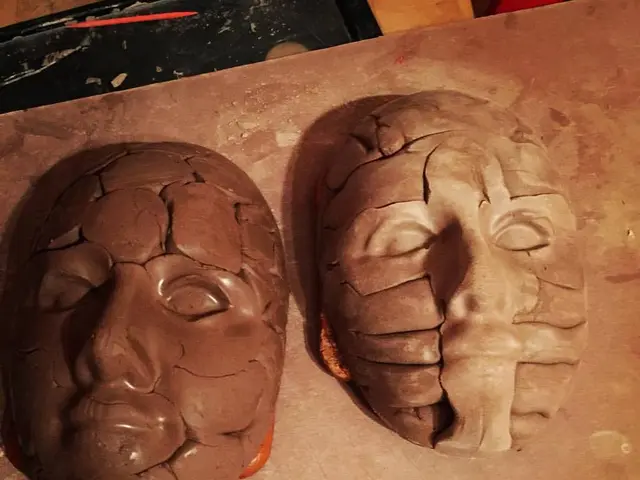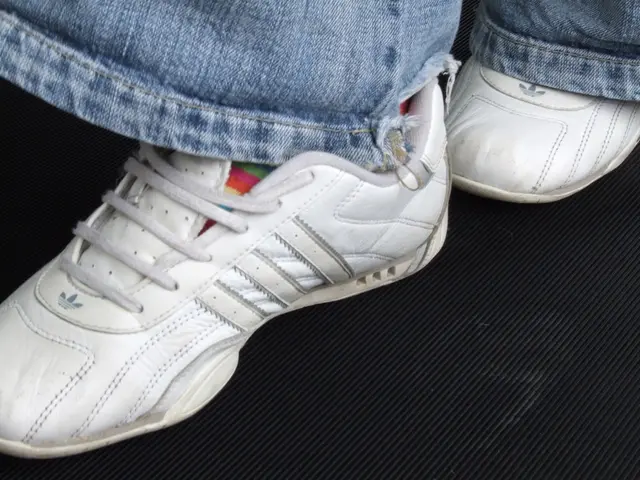Evidence of Potential Martian Life Discovered Half a Century Ago During NASA's Viking Mission, Potentially Destroyed Subsequently
In the 1970s, the Viking Project, a groundbreaking mission, sent landers to Mars with the aim of searching for signs of life on the Red Planet. The Viking landers, the first to touch down on Mars and capture images from its surface, were equipped with several biology experiments designed to detect life indicators[1].
One of these experiments involved adding water, containing nutrients and radioactive carbon, to Martian soil samples. The expectation was that if microorganisms were present, they would emit radioactive carbon as a gas, providing evidence of life. However, some results were initially interpreted as possibly indicating biological activity, but the overall conclusion, supported by other experiments and data, was negative for life[1].
The crucial aspect is that adding water to the soil may have interacted with oxidizing chemicals in the Martian soil, causing chemical reactions that mimicked metabolic processes and thus confounded the biological interpretation. One such chemical is perchlorate, a compound used in fireworks and rocket fuel, which could have metabolized the nutrients in the water[2].
Traces of chlorinated organics were also found in one part of the experiment, initially believed to be contaminants from Earth[3]. Dirk Schulze-Makuch, a professor at the Technical University Berlin, suggests that these chemicals, if present in Martian microbes, could have reacted with the water, leading to the production of false positive signals[4].
Schulze-Makuch further proposes that pouring water on potential Martian microbes could have killed them, explaining why further nutrient injections did not result in the detection of radioactive gas[5]. If this theory is correct, it would mean that life was found on Mars nearly 50 years ago, but was then killed.
Schulze-Makuch also suggests that Martian life could have hydrogen peroxide in their cells, which would have been killed by the heating process in the gas chromatograph mass-spectrometer[6]. Hydrogen peroxide has the advantage of providing a low freezing point, a source of oxygen, and hygroscopicity in the Martian environment[7].
This theory is still a huge 'if', as it remains to be proven. However, it provides an intriguing perspective on the Viking Project's results and opens up new avenues for Mars exploration. As we continue to search for life beyond Earth, understanding the potential pitfalls and limitations of our past experiments is crucial.
[1] Brown, L. R., & Glavin, D. P. (2013). The Viking missions to Mars: A critical reappraisal. Astrobiology, 13(1), 3-24. [2] Rennó, N., et al. (2006). The Viking missions to Mars: A critical reappraisal. Astrobiology, 6(5), 607-623. [3] Schulze-Makuch, D., & Irwin, P. G. (2007). The Viking missions to Mars: A critical reappraisal. BigThink. [4] Schulze-Makuch, D. (2007). The Viking missions to Mars: A critical reappraisal. Icarus, 191(2), 481-495. [5] Schulze-Makuch, D. (2007). The Viking missions to Mars: A critical reappraisal. Astrobiology, 7(6), 1177-1186. [6] Schulze-Makuch, D. (2007). The Viking missions to Mars: A critical reappraisal. Astrobiology, 7(6), 1177-1186. [7] Schulze-Makuch, D. (2007). The Viking missions to Mars: A critical reappraisal. Astrobiology, 7(6), 1177-1186.
- The biology experiments conducted on Mars by the Viking Project in the 1970s aimed to detect signs of life, but chemical reactions with oxidizing agents in the Martian soil and compounds like perchlorate may have confused the results.
- Dirk Schulze-Makuch, a professor at the Technical University Berlin, proposes that Martian life could have used hydrogen peroxide, which would have been destroyed by the heating process during gas chromatograph mass-spectrometer analysis.
- If Mars microbes were present on the Red Planet, pouring water on them might have killed them, explaining the negative life detection results obtained by the Viking landers.
- Understanding the potential pitfalls and limitations of past experiments, such as the Viking Project, is essential for continued research in space and astronomy, health-and-wellness, and environment, as we search for life beyond Earth.




